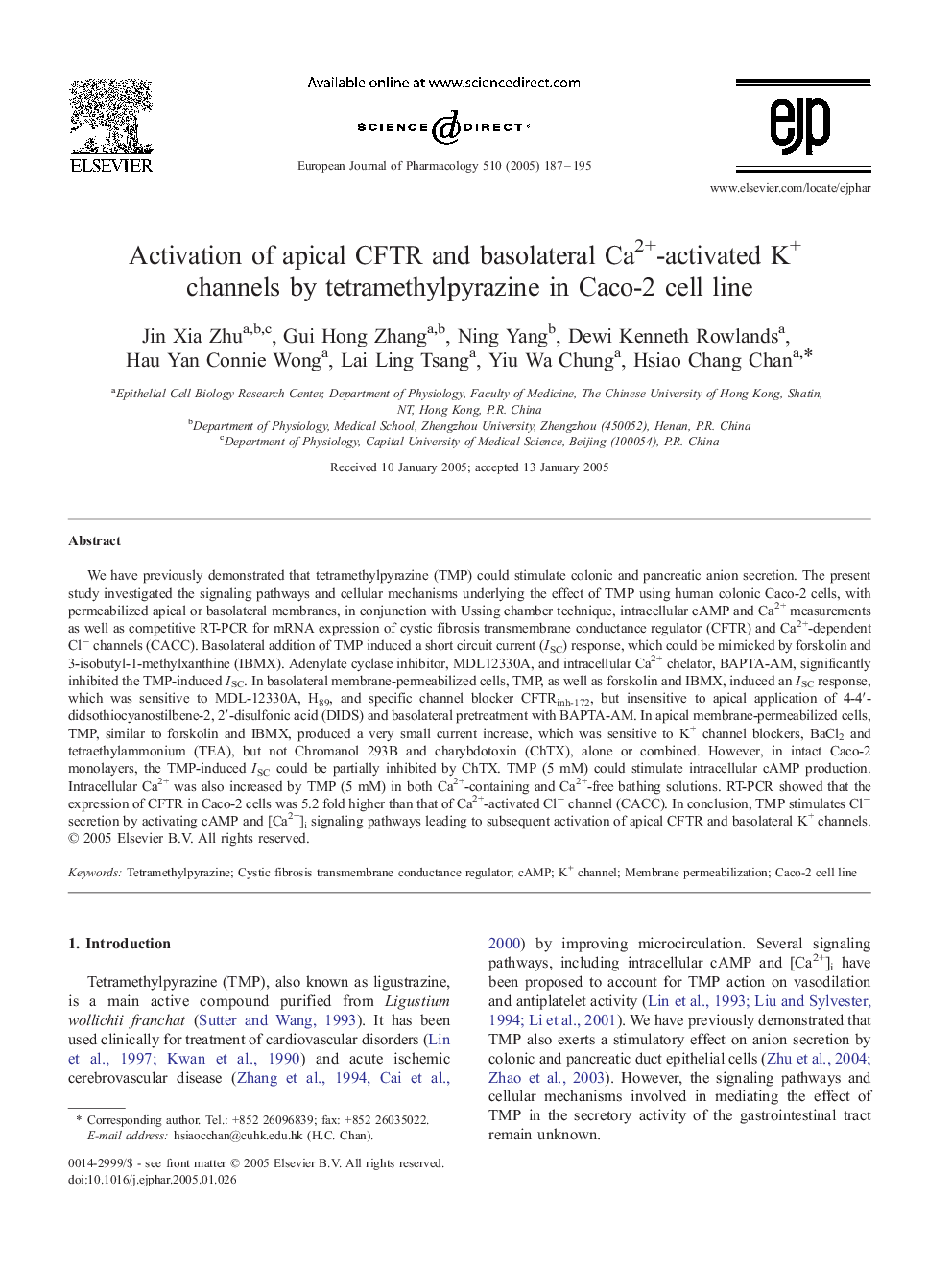| Article ID | Journal | Published Year | Pages | File Type |
|---|---|---|---|---|
| 9921453 | European Journal of Pharmacology | 2005 | 9 Pages |
Abstract
We have previously demonstrated that tetramethylpyrazine (TMP) could stimulate colonic and pancreatic anion secretion. The present study investigated the signaling pathways and cellular mechanisms underlying the effect of TMP using human colonic Caco-2 cells, with permeabilized apical or basolateral membranes, in conjunction with Ussing chamber technique, intracellular cAMP and Ca2+ measurements as well as competitive RT-PCR for mRNA expression of cystic fibrosis transmembrane conductance regulator (CFTR) and Ca2+-dependent Clâ channels (CACC). Basolateral addition of TMP induced a short circuit current (ISC) response, which could be mimicked by forskolin and 3-isobutyl-1-methylxanthine (IBMX). Adenylate cyclase inhibitor, MDL12330A, and intracellular Ca2+ chelator, BAPTA-AM, significantly inhibited the TMP-induced ISC. In basolateral membrane-permeabilized cells, TMP, as well as forskolin and IBMX, induced an ISC response, which was sensitive to MDL-12330A, H89, and specific channel blocker CFTRinh-172, but insensitive to apical application of 4-4â²-didsothiocyanostilbene-2, 2â²-disulfonic acid (DIDS) and basolateral pretreatment with BAPTA-AM. In apical membrane-permeabilized cells, TMP, similar to forskolin and IBMX, produced a very small current increase, which was sensitive to K+ channel blockers, BaCl2 and tetraethylammonium (TEA), but not Chromanol 293B and charybdotoxin (ChTX), alone or combined. However, in intact Caco-2 monolayers, the TMP-induced ISC could be partially inhibited by ChTX. TMP (5 mM) could stimulate intracellular cAMP production. Intracellular Ca2+ was also increased by TMP (5 mM) in both Ca2+-containing and Ca2+-free bathing solutions. RT-PCR showed that the expression of CFTR in Caco-2 cells was 5.2 fold higher than that of Ca2+-activated Clâ channel (CACC). In conclusion, TMP stimulates Clâ secretion by activating cAMP and [Ca2+]i signaling pathways leading to subsequent activation of apical CFTR and basolateral K+ channels.
Keywords
Related Topics
Life Sciences
Neuroscience
Cellular and Molecular Neuroscience
Authors
Jin Xia Zhu, Gui Hong Zhang, Ning Yang, Dewi Kenneth Rowlands, Hau Yan Connie Wong, Lai Ling Tsang, Yiu Wa Chung, Hsiao Chang Chan,
